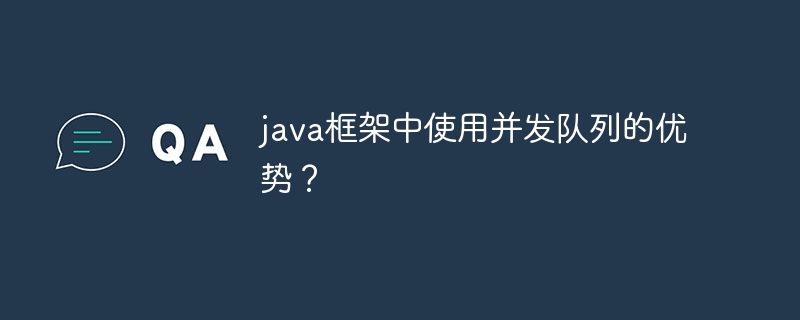java并发队列提供线程安全性、快速插入和删除、性能优化、可扩展性和易用性等优势,适用于多线程环境下的元素操作,如生产者-消费者模式中的任务处理。

Java 框架中并发队列的优势
并发队列是一种队列数据结构,支持并发环境下的多线程操作。它们允许多个线程同时访问和操作队列中的元素,从而提高应用程序的吞吐量和响应时间。
优势:
线程安全性:并发队列采用线程安全锁机制,确保在多线程环境下同步对队列的访问,防止数据损坏。 插入和删除快速:并发队列通常使用循环缓冲区来存储元素,这提供了快速的插入和删除操作。 性能优化:并发队列通过减少上下文切换和争用来优化性能,从而提高整体应用程序的效率。 可扩展性:并发队列在高并发环境下表现良好,可以随着应用程序负载的增加而轻松扩展。 易于使用:Java 中的并发队列 API 提供了直观且易于使用的接口,使开发人员能够轻松地将并发队列集成到应用程序中。实战案例 :
生产者-消费者模式:
并发队列的一个常见用途是实现生产者-消费者模式。该模式涉及一个或多个生产者线程向队列中插入元素,而一个或多个消费者线程从队列中获取和处理元素。
1
2
3
4
5
6
7
8
9
10
11
12
13
14
15
16
17
18
19
20
21
22
23
24
25
26
27
28
29
30
31
32
33
34
35
36
37
38
39
40
41
42
43
44
45
46
47
48
49
50
51
52
53
54
55
56
57
58
59
60
61
62
63
64
65
66
67
import java.util.concurrent.LinkedBlockingQueue;
import java.util.concurrent.ThreadLocalRandom;
// 生产者线程
class Producer implements Runnable {
private final LinkedBlockingQueue<Integer> queue;
Producer(LinkedBlockingQueue<Integer> queue) {
this.queue = queue;
}
@Override
public void run() {
while (true) {
try {
// 生成一个随机数
int number = ThreadLocalRandom.current().nextInt(100);
// 将随机数插入队列
queue.put(number);
System.out.println("Producer inserted number: " + number);
} catch (InterruptedException e) {
e.printStackTrace();
}
}
}
}
// 消费者线程
class Consumer implements Runnable {
private final LinkedBlockingQueue<Integer> queue;
Consumer(LinkedBlockingQueue<Integer> queue) {
this.queue = queue;
}
@Override
public void run() {
while (true) {
try {
// 从队列中获取元素
int number = queue.take();
// 处理元素
System.out.println("Consumer retrieved number: " + number);
} catch (InterruptedException e) {
e.printStackTrace();
}
}
}
}
public class Main {
public static void main(String[] args) {
// 创建一个并发队列
LinkedBlockingQueue<Integer> queue = new LinkedBlockingQueue<>();
// 创建生产者和消费者线程
Producer producer = new Producer(queue);
Consumer consumer = new Consumer(queue);
// 启动生产者和消费者线程
new Thread(producer).start();
new Thread(consumer).start();
}
}
以上就是java框架中使用并发队列的优势?的详细内容,更多请关注其它相关文章!
